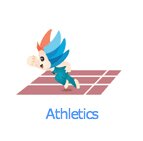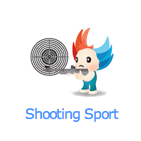Swimming

Swimming
-
After athletics, swimming has the largest number of events in the Olympics. Swimmers use their hands and feet to move forward in the water in the sport of swimming, which is accessible as a relatively easy-to-learn community sport for people of all ages and genders. Swimming is helpful in developing muscles and maintaining heart and lung health as it requires swimmers to use their whole body and take deep breaths.
Total days of play : 7 days
Events
21 men’s events
Freestyle: 50m, 100m, 200m, 400m, 800m,1500m, 10km open water
Breaststroke: 50m, 100m, 200m
Backstroke: 50m, 100m, 200m
Butterfly: 50m, 100m, 200m
Individual medley: 200m, 400m
4*100m, 4*200m freestyle relays; 4*100m medley relay
21 women’s events
Freestyle: 50m, 100m, 200m, 400m, 800m,1500m, 10km open water
Breaststroke: 50m, 100m, 200m
Backstroke: 50m, 100m, 200m
Butterfly: 50m, 100m, 200m
Individual medley: 200m, 400m
4*100m, 4*200m freestyle relays; 4*100m medley relay
Rules
< Freestyle (crawl) >
Swimmers stretch their bodies into a position that creates less resistance in the water and continuously pull forward with alternate arms while moving each leg up and down in alternating kicks that propel the body forward faster than any other stroke.
< Breaststroke >
Breaststroke can be swum with the face above water in recreational swimming, or with the head coming out of the water only when taking breaths in the much faster version of breaststroke in competitive swimming. While the legs are spread wider in recreational breaststroke in order to keep the body afloat, competitive breaststroke requires arms and legs to be kept closer to the body to allow faster forward movement.
< Backstroke >
The face of the swimmer remains above the water in backstroke, which is swum on one’s back. Since breathing is not a problem in the backstroke position, it may be helpful for people who find it impossible to take breaths while swimming (and people who cannot bear putting their face underwater) to learn backstroke first.
< Butterfly >
Like the front crawl, swimmers stretch out face down and move their arms and legs in the water, only in this case, the movement of arms and legs must be symmetrical. Through up-and-down movements in the water, the swimmer is propelled forward with every pull and every kick. This is usually the fastest stroke after the front crawl.
< Medley >
Butterfly à backstroke à breaststroke à freestyle
History
Swimming dates far back into history in both the East and the West, but due to the absence of accurate historical records, the origin of this sport remains unknown. Swimming most likely dates back to prehistoric ages and was probably practiced from the earliest days in the history of human beings. Prehistoric men who lived by the sea or a river must have had to swim for food in the water or swim across rivers and streams to move to new areas. These prehistoric men may also probably have been forced to dive underwater and jump off cliffs while trying to escape from predators.
Swimmers are depicted in stone sculptures that date back to 1000 B.C., and ancient records tell us of underwater combats and underwater workers. It is quite likely that the history of swimming goes all the way back to the prehistoric ages
Swimming was included in the first modern Olympics held in 1896 during which 100m, 500m and 1,200m freestyle events were held, and swimming has been an official discipline of the Olympic Games since the second Olympics held in 1900 in Paris.
Facilities
Future Universiades and USA Organizers






©Copyright 2015

























